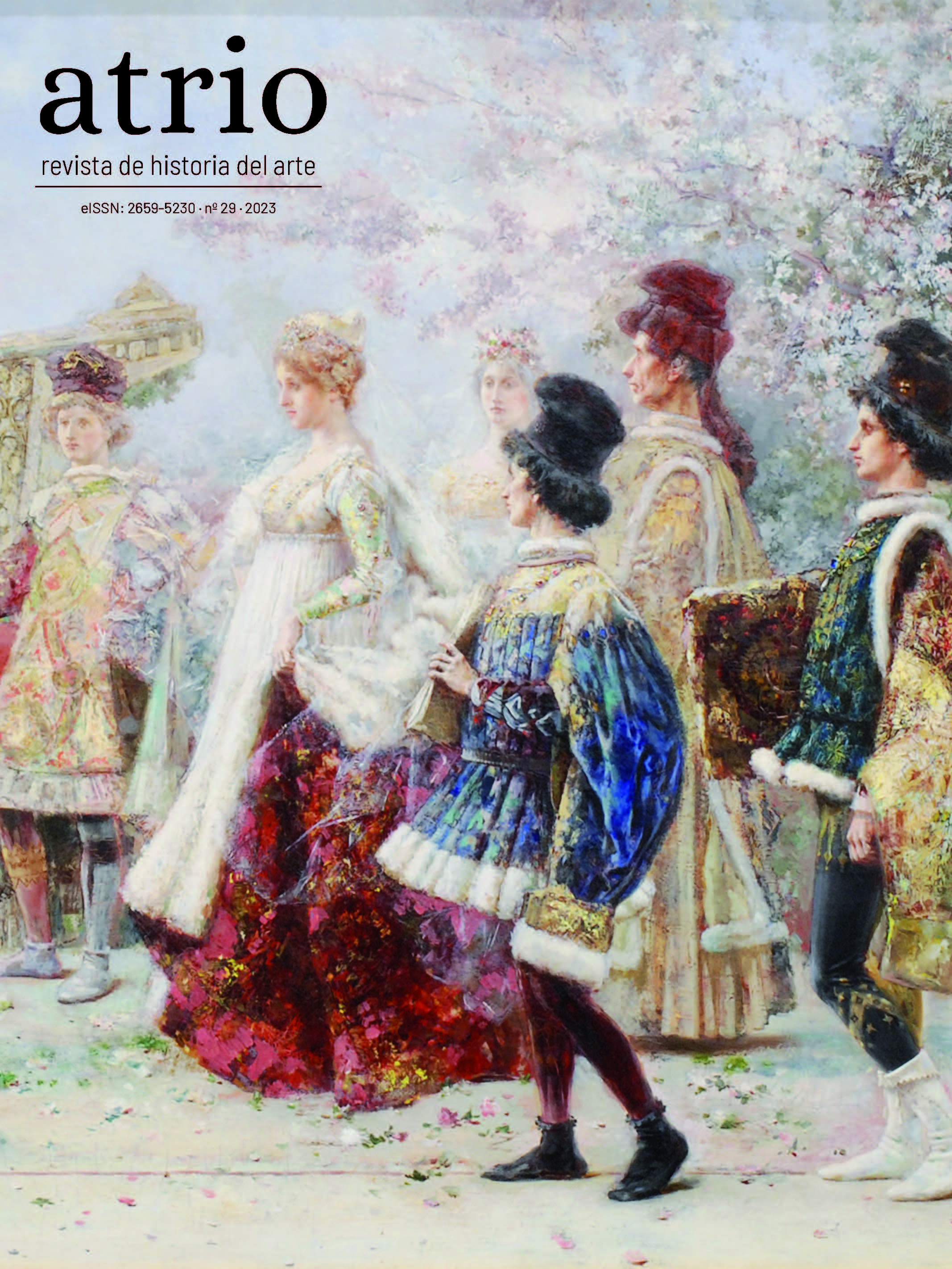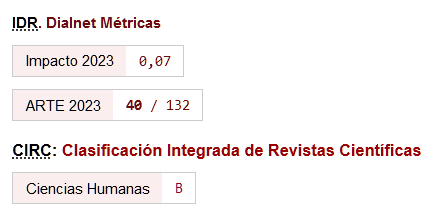Places of Death in the Colombian Capital within the Context of Violence, Centuries XX and XXI.
DOI:
https://doi.org/10.46661/atrio.8145Keywords:
Bogotá, Death, Violence, Physical and Psychological Places, Colombian Art, 20th and 21st CenturiesAbstract
Starting from the hypothesis that the analysis of artistic production is an effective strategy to understand the imaginary place that an issue like death can occupy within cities. This article proposes a reflection on some of the works of Colombian artists, such as: Débora Arango, Alejandro Obregón, Beatriz González, Doris Salcedo, Óscar Muñoz, María Evelia Marmolejo, Ana Claudia Múnera and Clemencia Echeverri. Whose visual narratives were created around a specific place and circumstances, in this case Bogotá as a scene of death derived from the problems of sociopolitical violence that occurred during the 20th and 21st centuries. These artistic proposals form a very deep look, with a strong critical nuance, on the possible causes and impact that these events have had on the way the city is perceived.
Downloads
References
“Auras anónimas de Beatriz González, declarado Patrimonio Cultural de la Nación.” Artnexus.es. Consultado el 13 de marzo de 2023. https://www.artnexus.com/es/news/5db876bd89e12e8f5639454f/auras-ano-nimas-by-beatriz-gonzalez-included-in-the-declara-tion-of-the.
Beltrán Valencia, Gina. “Doris Salcedo: creadora de memoria.” Nómadas, no. 42 (2005): 185-193.
Cruz Fajardo, Marley. “Huellas que narran historias. Miradas en el arte sobre la violencia en Colombia.” Letras históricas, no. 12 (2005): 201-219. https://doi.org/10.31836/lh.12.1784.
Malagón Kurka, Margarita. Arte como presencia indéxica. Bogotá: Universidad de los Andes, 2010.
Museo de Memoria de Colombia. Aliento, Óscar Muñoz. Consultado el 11 de marzo de 2023. https://museodememoria.gov.co/arte-y-cultura/aliento/.
Museo de Memoria de Colombia. Auras anónimas, Beatriz González. Consultado el 9 de marzo de 2023. https://museodememoria.gov.co/arte-y-cultura/auras-anonimas/.
Robayo Alfonso, Álvaro. Crítica a los valores hegemónicos en el arte colombiano. Bogotá: Universidad de los Andes, 2001.
Sáez de Ibarra, Maria Belén. Treno: Clemencia Echeverri. Consultado el 2 marzo de 2023. https://www.clemenciaecheverri.com/treno-desaparicion-forzada-en-rios/.
Schuster, Sven. “Arte y violencia: la obra de Débora Arango como lugar de memoria.” Revista de Estudios Colombianos, no. 37-38 (2011): 35-40.
Vidal, Sebastián. “La sangre de Antígona: Tres casos de arte, violencia y género en Latinoamérica.” Revista Arte y crítica, no. 2 (2012): 1-6.
Published
How to Cite
Issue
Section
License
Copyright (c) 2023 Sandra Patricia Bautista Santos

This work is licensed under a Creative Commons Attribution-NonCommercial-ShareAlike 4.0 International License.
Los autores/as que publican en Atrio. Revista de historia del arte están de acuerdo con los siguientes términos:
- Los autores/as conservan los derechos de autor y garantizan a la revista el derecho de ser la primera publicación del trabajo al igual que licenciado bajo una licencia de Creative Commons Attribution-NonCommercial-ShareAlike 4.0 International License que permite a otros compartir el trabajo con un reconocimiento de la autoría de este y la publicación inicial en esta revista.
- El autor/a o cedente del material que se entrega para su publicación autoriza a la revista para que publique, sin obligación alguna (económica o de otra naturaleza), el contenido del referido manual tanto en formato papel, como en digital, así como en cualquier otro medio. Esta cesión de uso del material entregado comprende todos los derechos necesarios para la publicación del material en la revista. Quedan garantizados, simultáneamente, los derechos morales del autor
- El autor/a o cedente es plenamente consciente y está de acuerdo con que todos o cualesquiera de los contenidos proporcionados, formarán una obra cuyo uso se cede a la revista para su publicación total o parcial.
- El autor/a o cedente garantiza ser el titular de los derechos de Propiedad Intelectual sobre los contenidos proporcionados, es decir, sobre el propio texto e imágenes/fotografías/obras fotográficas que se incorporan en su artículo.
- El autor/a o cedente asegura y garantiza: (i) que todo el material enviado a la revista cumple con las disposiciones legales aplicables; (ii) que la utilización de cualquier material protegido por derechos de autor y derechos personales en la concepción del material se encuentra regularizada; (iii) que obtuvo las licencias de derechos, permisos y autorizaciones necesarias para la ejecución del material, inclusive los derechos de imagen, si fueran aplicables; y (iv) que el material no viola derechos de terceros, incluyendo, sin limitarse a estos, los derechos de autor y derechos de las personas.
- El autor/a o cedente, exime a la revista de toda y cualquier responsabilidad con relación a la violación de derechos de autor, comprometiéndose a emplear todos sus esfuerzos para auxiliar a la revista en la defensa de cualquier acusación, medidas extrajudiciales y/o judiciales. Asimismo, asume el abono a la revista de cualquier cantidad o indemnización que esta tenga que abonar a terceros por el incumplimiento de estas obligaciones, ya sea por decisión judicial, arbitral y/o administrativa.













